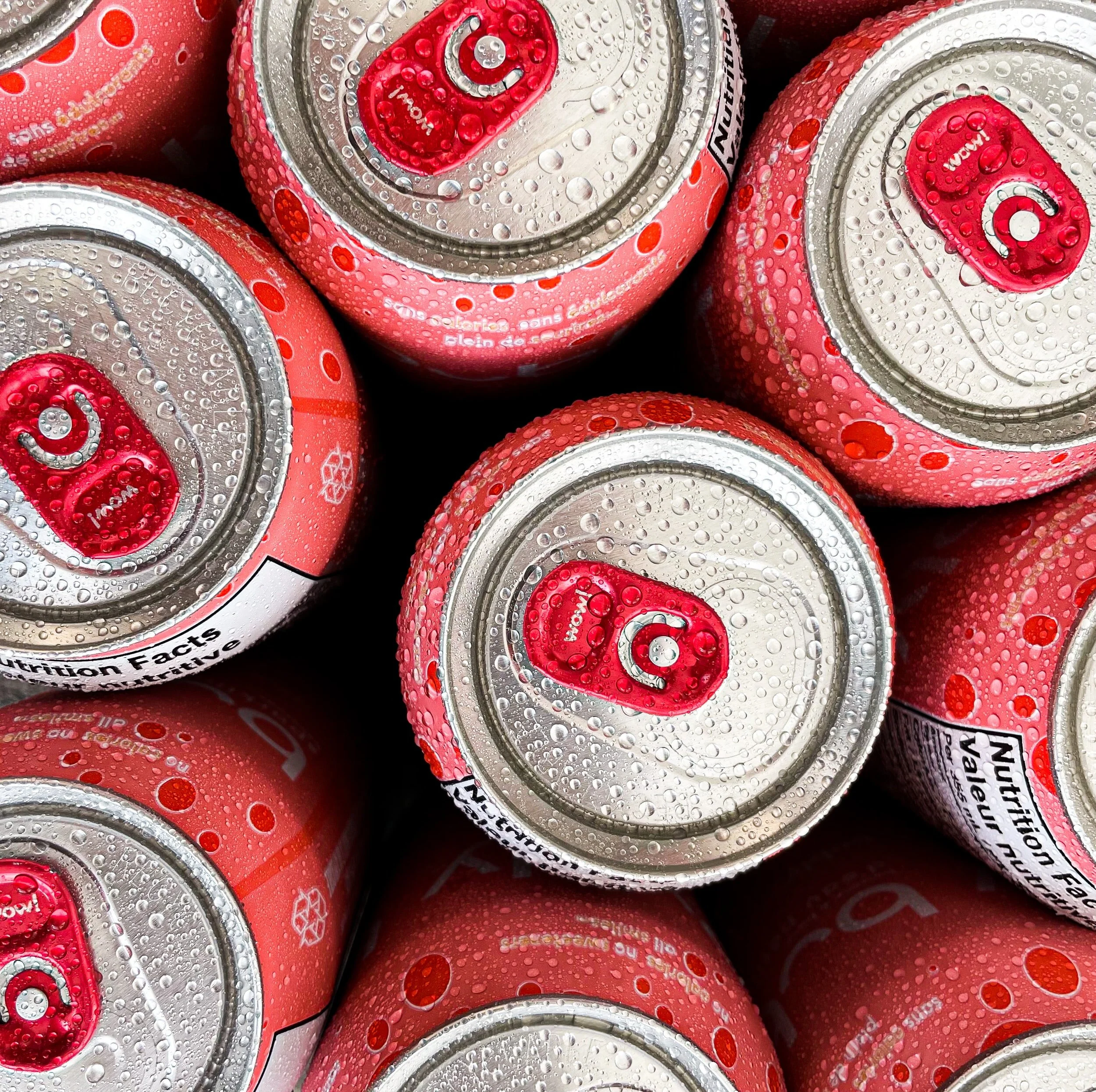Shrink Labels vs Adhesive Labels
TRADITIONAL LABELING VS SHRINK SLEEVE LABELING
Today, we’re talking through the pros and cons of shrink labels vs adhesive labels in product packaging. While both approaches to labeling your products yield great results, the choice between shrink sleeves vs traditional labeling can be challenging. We’ll lay out each option in detail so you can make the best choice for your packaging needs. Read on for more!
BENEFITS OF AN ADHESIVE LABEL
Die Cut Designs
Die-cutting lets you turn your label’s exterior into an intricate pattern. Die-cutters vary from a traditional die formed from metal to laser die-cutters, blade die-cutters, and freeform cutters. These technologies allow for a creative approach to labeling beyond the traditional adhesive label shapes.
Varnishes, Glosses, and Foils
Traditional labeling techniques give you a wide range of options when it comes to designing and stylizing your label. Varnishes that add matte or gloss finishes, foils, metallic inks, coatings, and more are easy to implement in the labeling process, adding specialty effects that make your designs pop. Often, these elements can be mixed with special die cutting and substrates to make your label especially eye-catching.
This Blue Haven Gin label features embossing, back printing, and die cut details.
Substrate Choices
With traditional labels, you have many more choices for substrate options. Unlike shrink labels which have limitations in their materials because of the shrink wrap process, traditional labels have a wide variety in their substrate choices that can change the look of your label. From paper to metallic substrates, there are plenty of different label materials that can help you get the look and feel that you desire.
Labeling Flexibility
Like shrink labels, adhesive labels also give you great flexibility in your product packaging. Since labels are applied to the product, you can purchase product containers in bulk and then simply switch your label with your seasonal offerings, specialty products, and limited edition runs.
Embossing and Debossing
Because traditional labeling can be printed on substrates that are thick enough to create relief effects, adhesive labels can feature embossing and debossing to create detail on the label surface. These tactile effects can boost your label’s appeal to customers and create unique label creations.
Durability of Traditional Labels
Traditional labels can be extremely durable like shrink labels. Different varnishes, adhesives, and substrates can be mixed together to create labeling that is moisture resistant and wear adverse.
Back Printed Labels
One of the unique benefits of traditional labeling is the option of back printing. Designs can be printed on the reverse of labels to create designs and images that show through packaging. This is usually applied to products that can be seen through, but can also be used to store additional product information that customers can access by peeling the label back.
BENEFITS OF A SHRINK SLEEVE
Full-Coverage Design
One of the biggest benefits of the shrink sleeve label is its ability to conform to different sized products. Shrink labels offer full-color covering even if the material isn’t perfectly cylindrical. Because shrink sleeve labels are activated by heat, the shrink wrap conforms to the product packaging, meaning you can use every inch of the product surface for marketing purposes.
These shrink wrap labeled cans showcase the durability and seamless application of shrink packaging.
Flexibility of Shrink Labeling
Shrink labels offer great flexibility when it comes to changing product packaging without changing the whole container. This allows companies to purchase containers in bulk with a blank surface. Then, different shrink wrap labels can be applied to suit different products, changes in seasonal offerings, and specialty branding designs
Low Profile Edging
Shrink wrap labels have a low profile edge that gives the packaging a sleek finish. This means that shrink sleeve packaging can be a great solution for those that want the look of screen printing but want the more flexible appeal of shrink wrapping.
Durable Designs
Due to the material and printing technique of shrink packaging, shrink labels are extra-durable making them ideal for products that see wear and tear or condensation that could jeopardize the designs of certain exterior packaging. Reverse printed, shrink labels have their ink protected by a clear film. This prevents scratching and scuffing during transport and protects label designs from condensation and other environmental stressors.
Speciality Effects
Effects like varnishes, glosses, foils, and more are implementable with shrink sleeve labels. They do add extra costs, but the possibilities are endless for specialty design features and neat extras that can really make your product stand out.
Now that we’ve gone through the differences between shrink labels vs adhesive labels, we invite you to contact us to see how you can incorporate traditional labeling and shrink sleeve labels in your product packaging. You can contact one of our Derksen Co. team members by calling 920-685-4000 or you can drop us a message using our contact us page.
